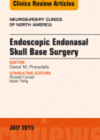
Journal Reviews
Predictors of diabetes insipidus post-hypophysectomy
Transient diabetes insipidus (DI) after pituitary surgery is not uncommon and its diagnosis fairly obvious. Permanent DI is rare and often depends on the neurosurgeon’s experience. This retrospective study describes a large series of patients with majority undergoing endoscopic transsphenoidal...
Paediatric versus adult pituitary adenomas
This retrospective study compares paediatric with adult patients undergoing pituitary adenoma surgery over a period of 26 years at a single institution. All surgeries were performed via a sublabial approach using the operating microscope. An endoscope was used occasionally for...
Recovery room cortisol to predict long-term glucocorticoid supplementation
The authors report the results of using recovery room (RR) cortisol to predict the need for long-term glucocorticoids in patients who underwent transsphenoidal surgery (TSS). They conducted a retrospective study of preoperative morning serum cortisol (MSC), RR cortisol and day...
Close monitoring of patients for delayed hyponatremia post-transsphenoidal surgery
he incidence of delayed hyponatremia is 16-28% and usually accounts for unplanned readmission of the patient within 30 days after transsphenoidal surgery. One of the surrogate measures of quality of care adopted by the government and regulatory agencies is 30-day...
The increasingly favourable outcomes from endoscopic endonasal approaches for the management of pituitary adenomas
Historically, pituitary tumours have been surgically managed with an open, transcranial approach. Although this approach still has its merits in large intracranial adenomas, technological advancement has allowed smaller tumours to be debulked via a transseptal microscopic technique. These days, the...










